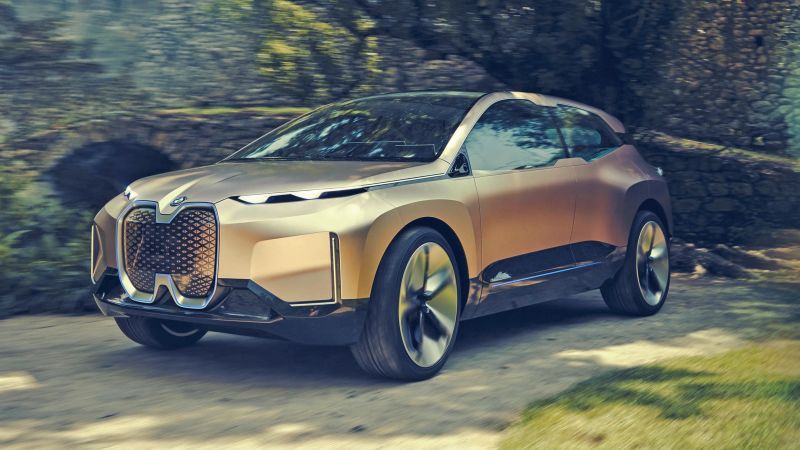
The 2021 BMW Vision iNext Concept is packed full of future technology, like autonomous driving, an electric drivetrain, projector that track handheld objects, smart seating surfaces that respond to touch, and more fluff, which is a lot for what’s essentially going to just be a flagship electric crossover.
On the outside, the Vision iNext Concept is supposed to be a relatively accurate proposal for the design direction of a future BMW electric crossover, which is meant to debut in production form in 2021 and act as the flagship for a new era of fifth-gen electric vehicles for the brand.
The giant ugly merged kidney grille is completely sealed off to conceal a sensor array that will, in theory, be the backbone of the production iNext’s fully-autonomous capability, which the company is hoping to have ready for the road by 2021. Executives admitted during a top secret presentation in a customized Lufthansa Boeing 777 cargo jet earlier this week that the 2021 autonomy date is mostly dependent on how governments decide to legislate the technology.
Advertisement
In person, the Vision iNext is a striking design, and I think it genuinely looks good, for a crossover. From the rear end, the wide presence of the thing is even sporty, and the new window kinks in the window framing of the suicide doors are a distinct standout look.
Inside is where all of the future-sounding, less-likely stuff lives. The concept only seats four, and I’d bet real money the production version is going to be designed for five, just for practicality’s sake.
Advertisement
The interior is furnished with lovely soft wood accents paired with a cool mixed-blue seating accent, a new double-screen dashboard with one in front of the driver stretching behind a second, larger screen open to the rest of the cabin. Controls are extremely sparse thanks to BMW’s future technology strategy it calls “Shy Tech.”
I actually really like BMW’s idea of “Shy Tech,” which essentially purges the cabin of any physical controls to make it a sleeker design and a less-aggressive place to relax. The idea is that an autonomous car should feel more like a “boutique hotel” and less like, well, a car I guess. BMW calls this approach developing passengers’ “Favorite Space.” I like it because this is probably what we’d want an autonomous ride to be like—tech when I need it and only on command.
Advertisement
Instead of obvious dials, buttons and switches, Shy Tech involves BMW’s annoying gesture control system, intuitive, “natural” voice commands with a new virtual Intelligent Personal Assistant, and smart touch surfaces like the wood arm rest that responds to specific finger movements. Otherwise, everything shies away to leave the passengers in a cabin with simpler features.
The front seats also fold about a third of the way down, intruding on the rear seating space, but BMW says this will make it easier to talk to the rear passengers in autonomous mode.
The interior also involves what BMW calls “Intelligent Beam,” which is a series of installed projectors that are intended to project onto and track smart objects, like a blank book, magazine, or other surface and project dynamic and interactive displays.
Advertisement
When I asked the BMW reps why this was more efficient than something like an iPad, they said that, well, basically, it’s just a concept.
For those of you bothered by autonomy, BMW promises the iNext will still be available to drive. The iNext’s two driving modes are Boost and Ease. Boost is for human driving, and Ease is autonomous to turn the car into a place of “relaxation, interaction, entertainment or concentration.” On the concept, the pedals do fold flat when not driving, and the steering wheel pulls away from the driver.
As for performance, representatives remarked figures of around 600 km, or around 370 miles or more, of range on Europe’s new stricter WLTP testing cycle as a goal after the official presentation. We’ll have a much better idea of how this thing will really look and really drive like after the turn of the decade, and a rep did say they would have an early production run for real-world driving a year or more before production started.
Advertisement
Advertisement
Advertisement
Advertisement















